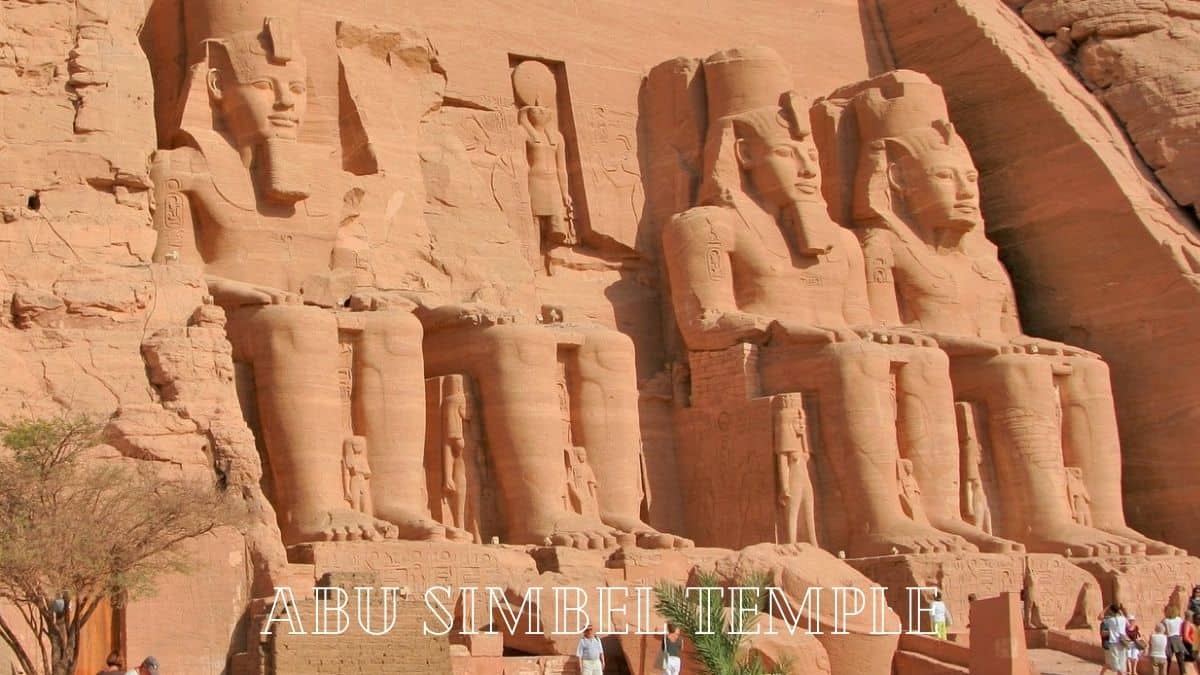
Abu Simbel Temple
Abu Simbel temple is one the most amazing monuments in the world, as it fascinates the world with its great architecture.
In addition to the phenomenon, The sun is perpendicular to the face of the statue of Pharaoh Ramses II.
Moreover, it is one of the most famous archaeological temples in Egypt.
In this article, we will tell you more about the history and the architecture of Abu Simbel Temple.
What is the location of Abu Simbel Temple?
Abu Simbel Temple is in Aswan Governorate on the western bank of Lake Nasser.
Why it was named “Abu Simbel”?
The name “Abu Simbel” was given to this archaeological site by the Swiss traveler Johann Ludwig Burckhardt, due to when he discovered the site in 1813, he was taken to this area by a child called “Abu Simbel”.
The sun is perpendicular to the face of the statue of Pharaoh Ramses II:
- The sun is perpendicular to the face of the statue of Ramses II twice a year the first on October 22 and the second on February 22.
- This phenomenon has been going on for tens of centuries.
- The importance of the Great Abu Simbel Temple is due to its association with the phenomenon of the sun perpendicular to the face of the statue of Pharaoh Ramses II, as all the world witnessed this phenomenon.
Who built Abu Simbel Temple?
- King Ramses II built the temple, Ramses II (about 1303 BC – 1213 BC), the most famous king of Egypt from the era of the modern state.
- He sat on the throne in his late teenage years and ruled Egypt from 1279 BC to 1279 BC. 1213 BC for a period of 67 years.

The description of Abu Simbel Temple:
The temple has a unique architectural design, as its facade is carved into the rock.
First: The Facade of the temple:
- It has four huge statues of King Ramses II, each of which is about 20 meters long, including the Battle of Kadesh, in which he defeated the Hittites.
- In addition to religious scenes depicting the king in his relations with ancient Egyptian deities.
- This temple includes two of the most important rock-cut temples in the far south of Egypt, namely Abu Simbel the Great.
- It was dedicated to the cult of “Ra Hor Akhti” and “Amon Ra” and “Ptah” and the king himself.
- The sculpting of the temple took 20 years.
Second: The small temple:
It is about 100 meters from the first temple.
It was as well dedicated to the goddess Hathor and Queen Nefertari, the main wife of the king.
Third: Interior walls:
The temple extends into the plateau at a depth of 24 meters.
Its interior walls have a group of wonderful scenes, which depicted the queen worshiping different gods, either with the king or alone.
Fourth: Holy of Holies:
- The architectural creativity of this temple appears with the succession of the sun’s rays perpendicular to the farthest place inside the temple, which is what we call the “Holy of Holies” where King Ramses II sits, in addition, that next to him are statues of the deities “Amon Ra”, “Ra Hor Akhti” and “Ptah” the god of the underworld.
- The sun shines on these statues, except for the statue of “Ptah” because he is the deity of the underworld, which must be in darkness.

Transferring Abu Simbel Temple:
- During the construction of Lake Nasser after the construction of the High Dam in the Aswan Governorate on the Nile River, the temple was at risk.
- As a result, in 1960, it was necessary to move the temples to avoid their submerging.
- The cost of the project was about 40 million dollars or 14 million Egyptian pounds at the time.
- The labor force was entire of Egyptian workers.
- Moreover, the total number of pieces reached about 1142 pieces, equivalent to 250 thousand tons.
- Then they moved the temple 210 meters west of its original place and about 65 meters above the ground.
- In addition, about 2,000 Egyptian workers participated in the implementation of this project.
In conclusion, Abu Simbel Temple is one of the main iconic images of Ancient Egyptian civilization. Due to what it shows and proves of greatness and precision.
